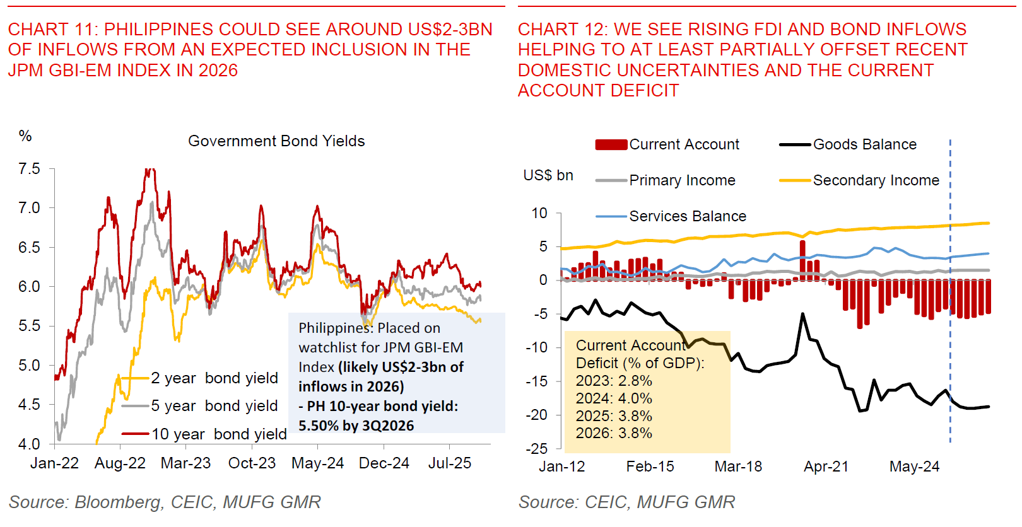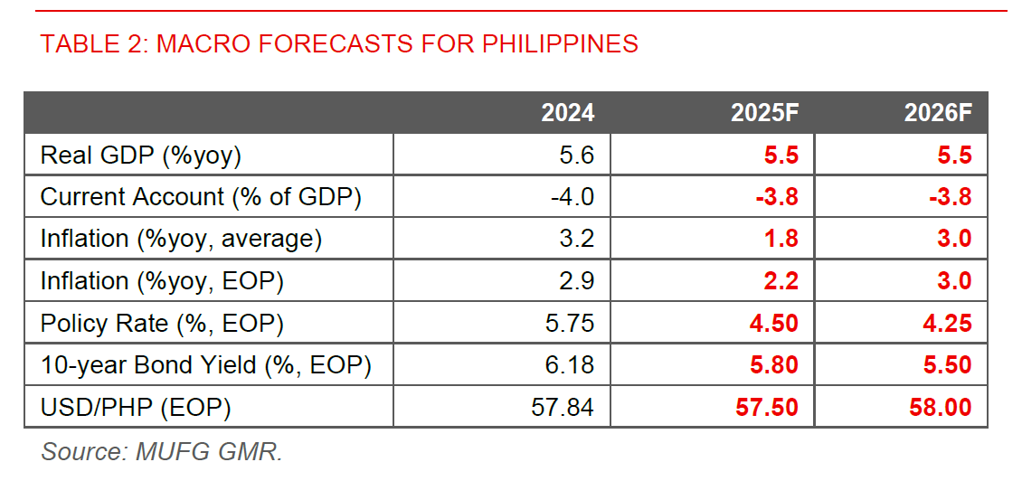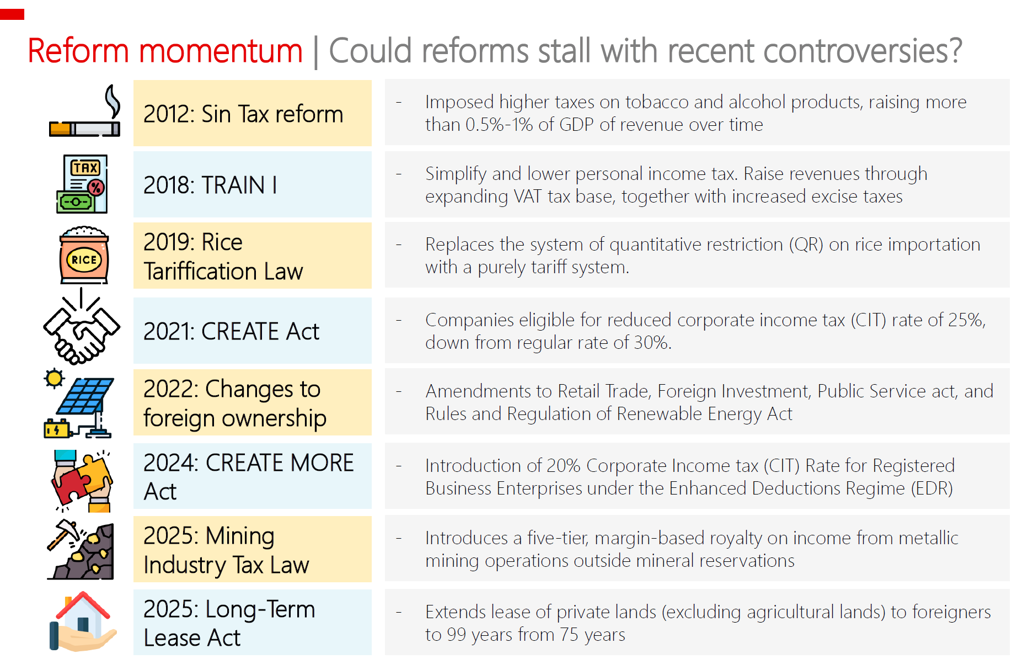- The Philippines central bank surprised the market by cutting rates by 25bps, bringing the policy rate to 4.75% from 5.00% previously. The consensus and ourselves expected a hold in policy rates in this meeting, even as we have been forecasting two more rate cuts by the BSP over the next 6 months.
- To us, the most important takeaway was a clear dovish tone from BSP Governor Remolona during the press conference, who also highlighted issues around flood projects corruption as a key downside risk for the economy. As such, we think further rate cuts are the path of least resistance (more details in the report).
- We now pencil in the BSP cutting rates to 4.25% by 2Q2026, which is one additional rate cut relative to what we were previously expecting, and also our new expectation for the terminal rate. In terms of timing, we think BSP will likely cut in the December 2025 meeting, and once more in April 2026. We now see PH 10-year bond yields declining to 5.50% by 2026.
- From an FX perspective, we correspondingly shift our USD/PHP forecast higher, and see the FX pair moving to 57.00 by 2Q2026 from 56.50 previously, reflecting the additional BSP rate cuts.
- We still think USD/PHP should move lower directionally at least in 1H2026, due to other offsetting positive factors such as a likely rise in FDI reflecting the surge in FDI approvals, manageable inflation, the lagged impact of policy rate cuts, and also inflows from an expected inclusion in the JPM GBI-EM bond index.
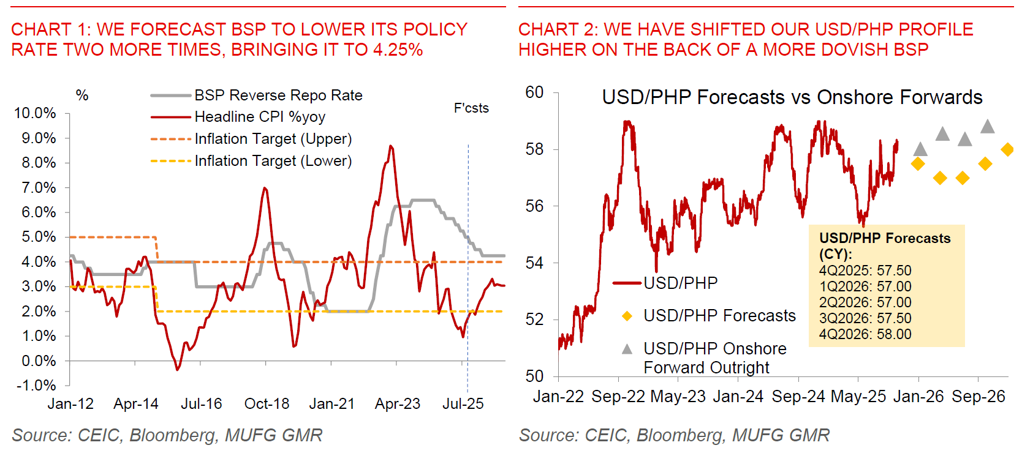
- Our global team’s forecast for further US rate cuts and a weaker Dollar are also key factors behind our thinking for USD/PHP to head lower. Nonetheless it’s worth highlighting that political risks both in Japan and France are at the moment providing some support for the Dollar, and the evolution of these political risks will be key as well for USD/PHP (see FX Focus – weighing up risks from heighted political uncertainty in France and FX Daily Snapshot – US dollar stabilises close to highs – Japan and France uncertainties persist).

The BSP’s October 2025 meeting was clearly dovish in a couple of ways, and to our minds signal that further rate cuts over the near-term are likely:
- First, the BSP in both its statement and also the press conference by Governor Remolona pointed to the recent flood projects corruption and governance cases as a key reason for the rate cut. According to the BSP, these developments could induce a possible slowdown in government and public infrastructure spending, and on top of that weigh on business sentiment and private investment.
- Second, the BSP also lowered its inflation forecasts for both 2026 and 2027 as a result, and highlighted a larger negative output gap and more room to cut rates as a result.
- Third, and perhaps most interestingly, the BSP estimates that the neutral nominal policy rate could now be lower than previously thought at 4% in new research, rather than the previous 5% indicated previously. While it does not sound like the BSP is taking the new model’s results wholesale and at face value, it perhaps suggests that the terminal rate is now deemed by the BSP to be between 4-5%, if not closer to 4%.
- Last but not least on FX intervention, the BSP said that it will not defend the Peso solely on outflows, but will defend the peso “when they think the depreciation is so sharp and large that it will become inflationary”.
Putting it all together, we now forecast the BSP to cut its policy rates by another 50bps, bringing the key rate to 4.25% by 2Q2026, from 4.75% currently. In addition, we think the BSP may also lower its Reserve Ratio Requirement from 5% to 4% at the start of next year.
For the PHP, these changes in forecasts imply somewhat less support for PHP from an FX perspective, but what will also matter for FX is the extent of growth slowdown, and also the resultant impact on key flow dynamics such as the current account deficit, FDI inflows, and to a smaller extent portfolio flows.
Outside of some domestic risks, we emphasise that the factors which we have highlighted previously generally continue to be supportive for PHP. These include domestic rice prices, which remains low based on the high frequency indicators we track, and helped by previous rice import tariff cuts, soft global rice prices, coupled with still decent domestic rice inventories. As such, inflation should remain manageable even through 2026 (notwithstanding risks from rice import ban changes). The combined and lagged impact of lower rates and inflation should provide further support for domestic demand including both consumption and investment. Last but not least, the pipeline of infrastructure projects especially in the renewable energy space remains very robust, with supportive government policies from the government’s Green Energy Auction Program (GEAP) and past relaxation of foreign investment restrictions in the renewable energy sector. This has also translated into a previous surge in FDI approvals, and our expectation is that some of these should start to filter through into a pickup in actual FDI over the next few months.
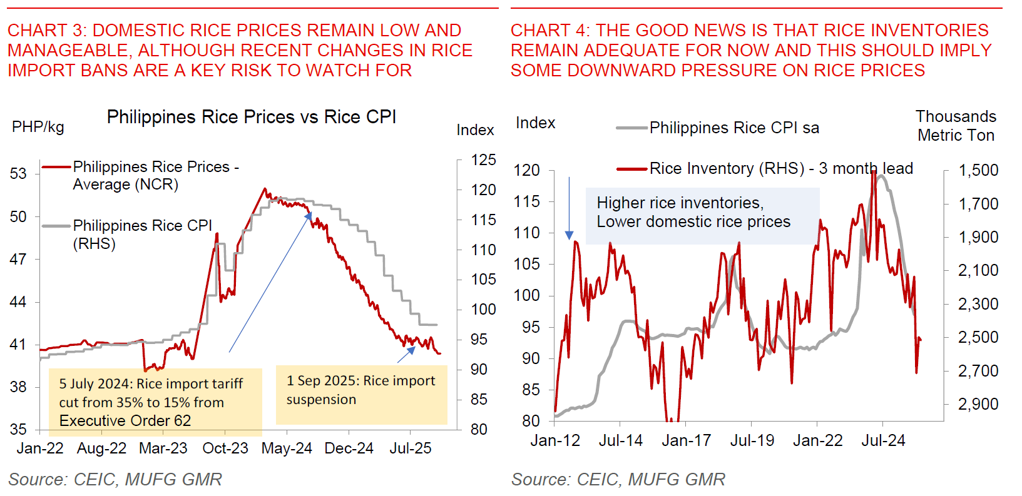
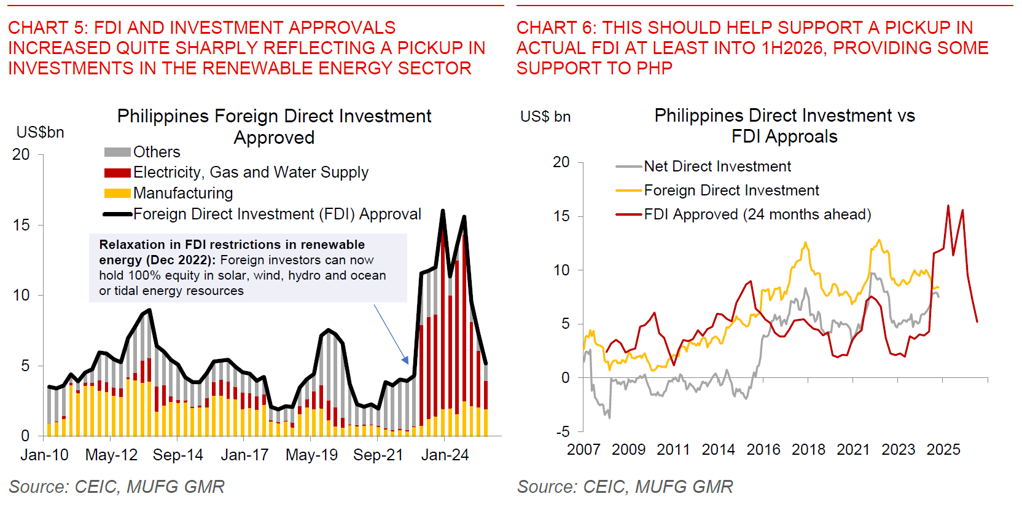
What has changed over the past month are two key domestic risks for the Philippines – 1) increasing concerns around corruption cases on flood control projects, and how this could spill over to the Philippines’ macroeconomy and markets, and 2) uncertainty around how the Philippines will handle rice imports and tariffs in 2026.
The government has been increasing allocation to flood control projects over time, rising to around 1% of GDP in the latest budget – and for good reason, given how the Philippines is vulnerable to the physical impact of climate change. With the government now reallocating this budget to other areas, coupled with increased scrutiny on other areas of spending, we think it is likely that there is a slowdown in government spending as we head into 2026. This is likely to weigh on growth to some extent and at least partially offset other positives such as lower rates and inflation. The 2013 episode of the Priority Development Assistance Fund issue, or more colloquially known as the pork barrel funds, provides some historical example of a possible impact, with government spending slowing down during that period.
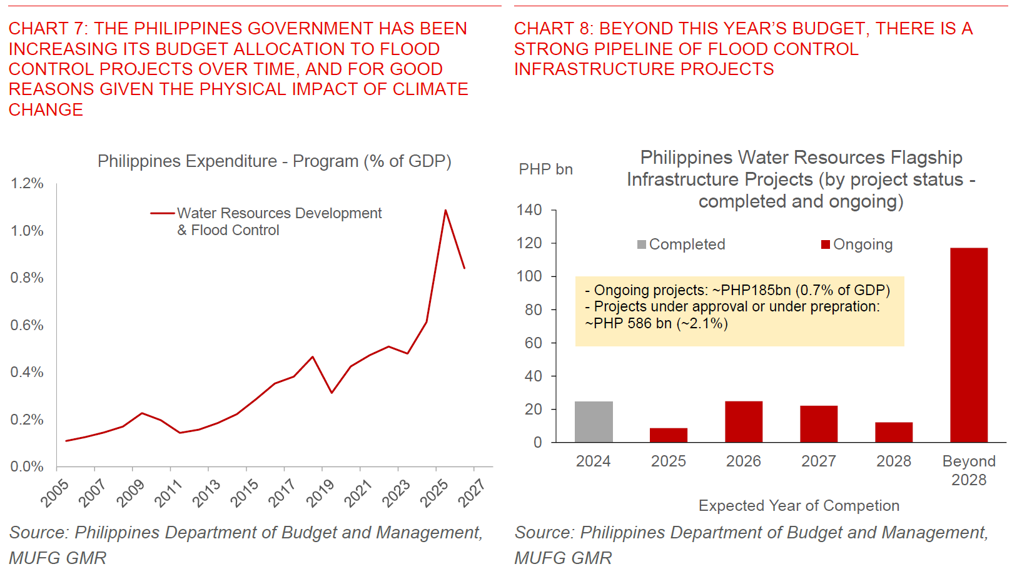
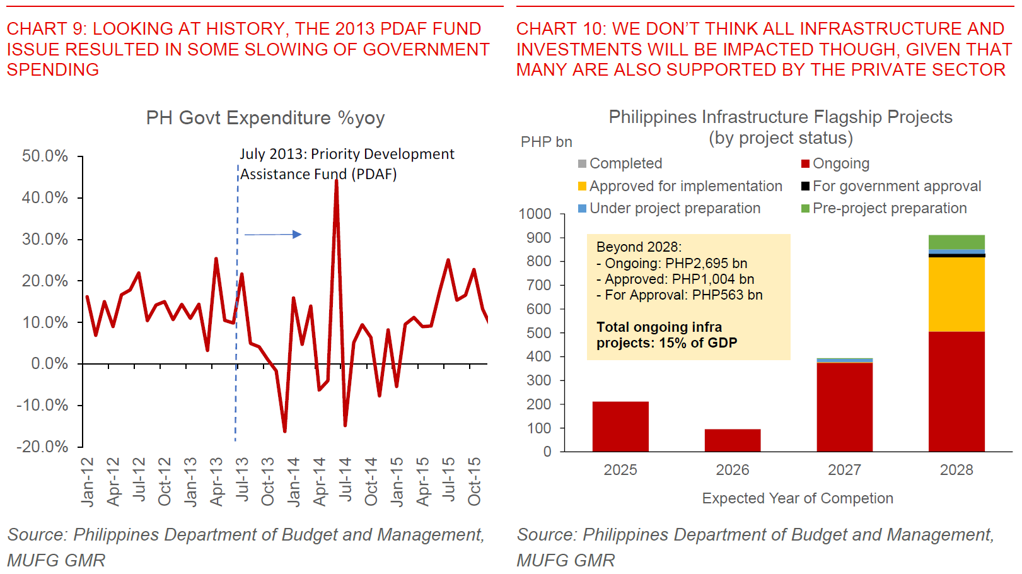
In addition, an expected inclusion of the Philippines in the JPM GBI-EM index should also support foreign bond inflows in 2026, and is expected to bring in around US$2-3bn of inflows.
Net-net, we correspondingly shift our USD/PHP forecast profile higher, and see the FX pair moving to 57.00 by 2Q2026 from 56.50 previously, reflecting the additional BSP rate cuts. We still think USD/PHP should move lower directionally at least in 1H2026, before reverting to its longer-term trend later into 2H2026.
As a base case, we think that structural reforms should still continue, but perhaps the pace could slow down somewhat. A key risk to the Philippines Peso could come if the structural reform momentum stalls significantly but we stress this is not our base case.
